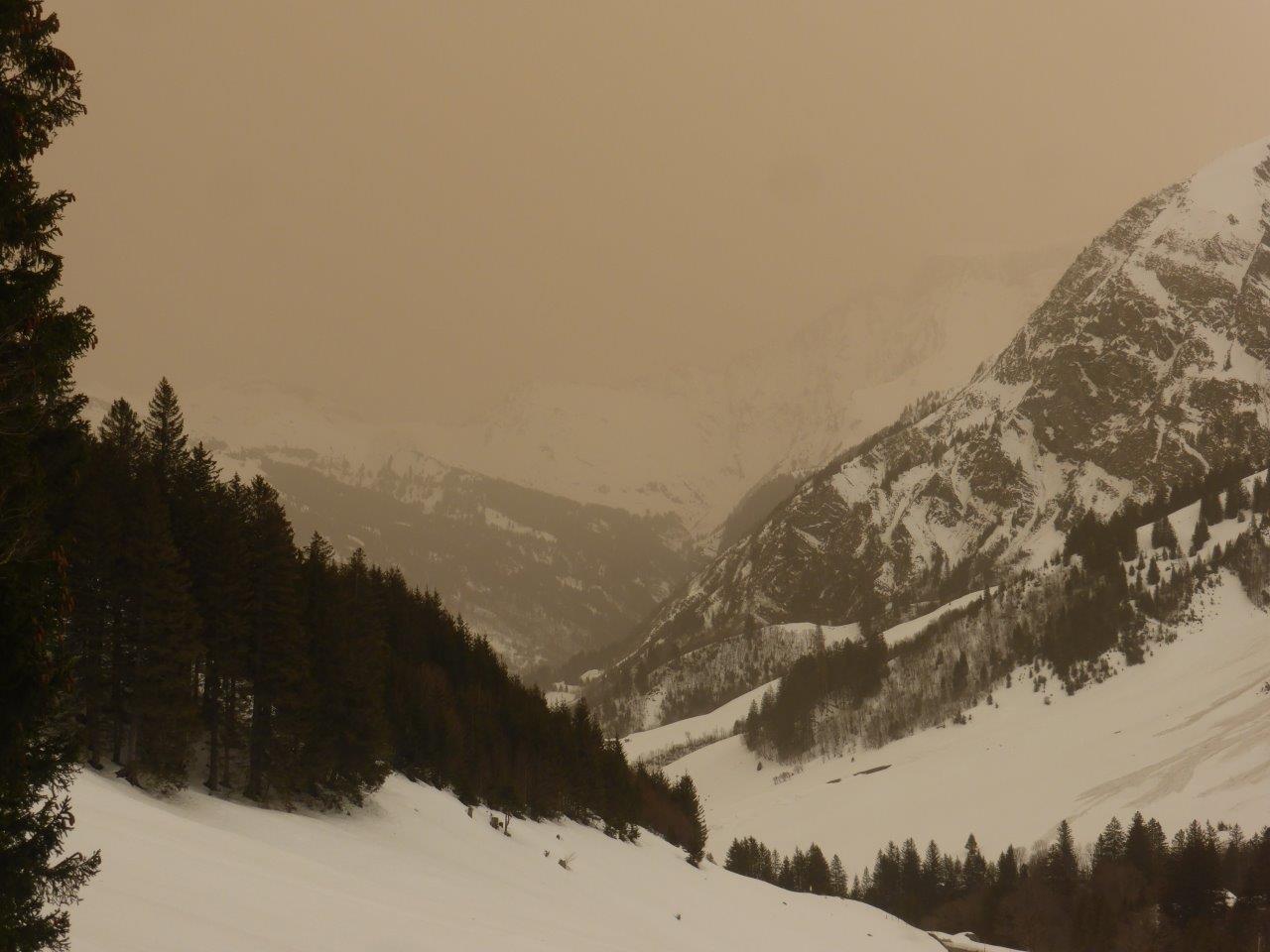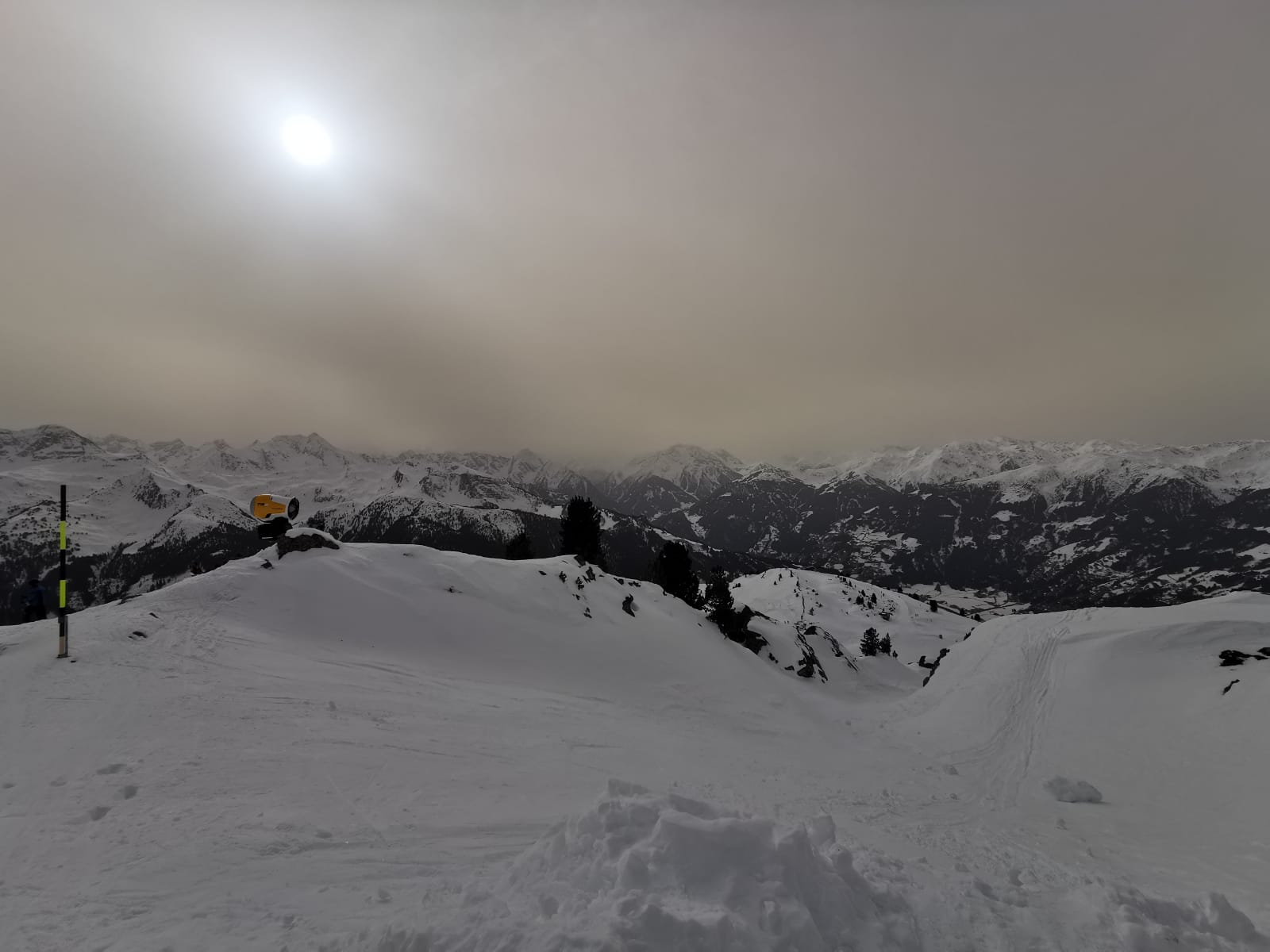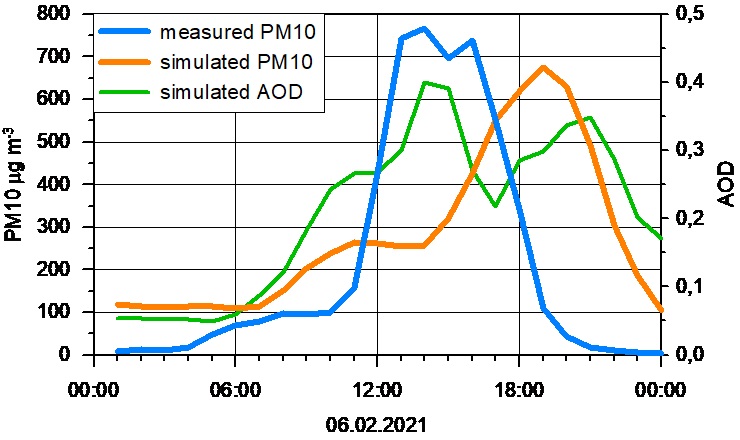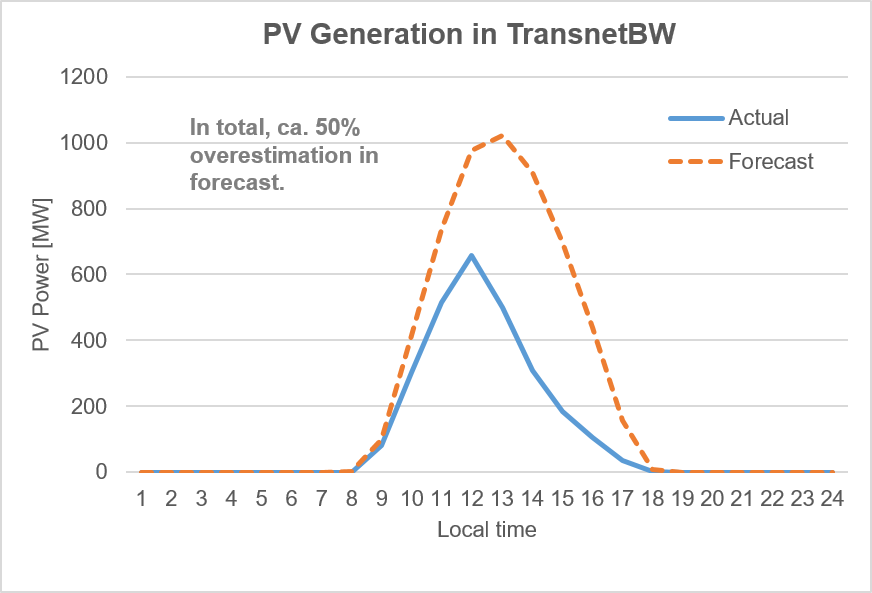Mineral dust transport causes dimming of the sky and stained cars. Does it also affect our electricity production?
Last weekend (06.02.2021) , the prevailing weather situation caused a strong transport of Saharan dust to Europe. This led to a notable dimming of the sky not only in Switzerland (Fig. 1) and Austria (Fig. 2), but also in Baden-Wuerttemberg (Fig. 3) where the event was well observable. The fact that Saharan dust was present in the atmosphere became clearly visible by the subsequent precipitation and the associated dust deposition on cars (Fig.4).
Using the model system ICON-ART, developed at IMK, German Weather Service performs pre-operational mineral dust forecasts since 2017. These forecasts aim to better predict the reduction of photovoltaic production due to elevated mineral dust concentrations in the atmosphere, and thus to improve forecasts of the photovoltaic yield.
The daily forecasts are available on the WMO Sand and Dust Storm Warning Advisory and Assessment System website (https://sds-was.aemet.es/forecast-products/dust-forecasts/forecast-comparison) and soon at https://www.imk-tro.kit.edu/10581.php.
The animation (Fig. 5) of predicted mineral optical depth shows the release of mineral dust on 05.02.21 over the Atlas Mountains and the subsequent transport to Europe. At the time the forecast was made, the dust was still on the ground in the desert. Hurricane-force gusts were recorded at weather stations in the Atlas Mountains (e.g. 117 km/h on 05.02.21 in Midelt, Morocco) in front of a far south reaching low pressure system in the upper atmosphere and the associated cold front. The high wind speeds close to the surface ultimately led to the release of the dust, which was then transported in a southerly flow toward the Mediterranean Sea. There, a low-pressure system formed and the asscociated so-called warm conveyor belt lifted the dust to higher altitudes and transported it with the polar jet across the Mediterranean Sea towards the Alps. The dust reached the Alps on 06.02.21. At the observatory at Jungfraujoch, Switzerland a maximum dust concentration of more than 700 µg m-3 was measured (NABEL (BAFU/Empa)). The daily threshold value in Germany is 50 µg m-3 (35 exceedances per year allowed). Figure 6 shows the simulated PM10 concentration and the aerosol optical thickness (AOD) for comparison.
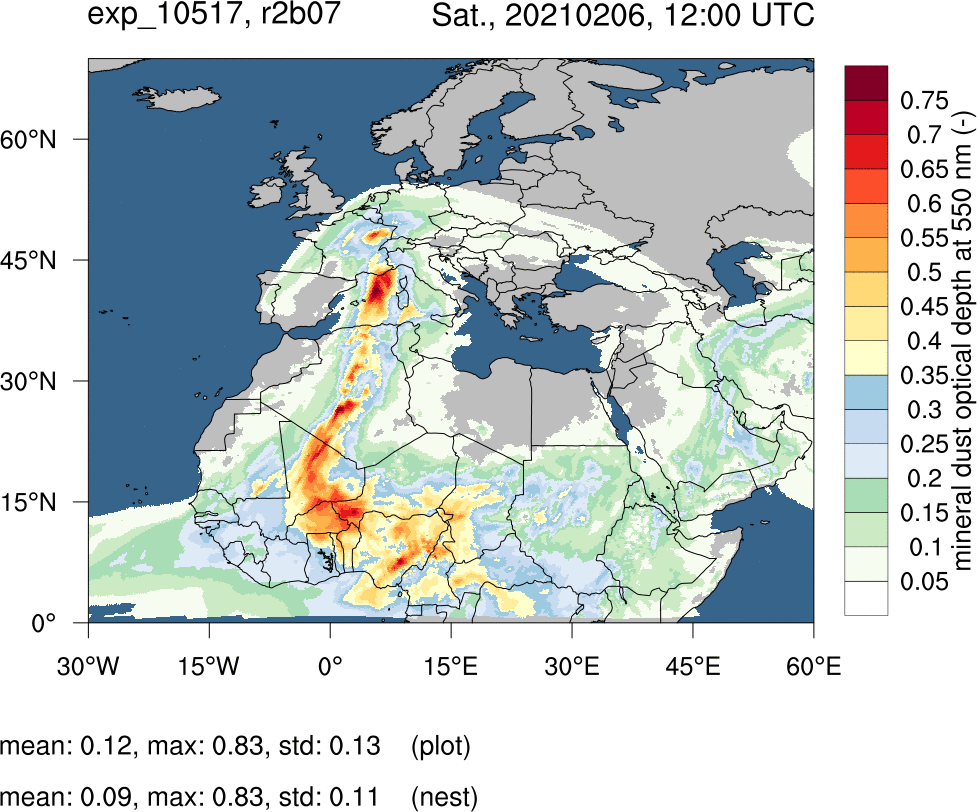

and simulated AOD at Jungfraujoch, Switzerland (06.02.2021)
What was the impact of the dust event on the solar energy yield in Germany? Mineral dust in the atmosphere modifies radiation (as seen in the photos) on the one hand, but also influences cloud formation. Both processes together are currently ignored in weather forecast models, which led to a significant overestimation (up to 50%) of the predicted solar energy yield for the southwest last weekend (Fig. 7). At IMK-TRO, we are working on an improved description of these processes in operational weather forecasting in the PermaStrom project (https://www.kit.edu/kit/pi_2020_060_aerosole-beeinflussen-solarstromertrag-in-europa.php).
Datasource: https://transparency.entsoe.eu/
Contact person:
Bernhard Vogel, Ali Hoshyaripour, WG Aerosols, Trace Gases and Climate Processes
Christian Grams, Julian Quinting, WG Large-scale Dynamics and Predictability

